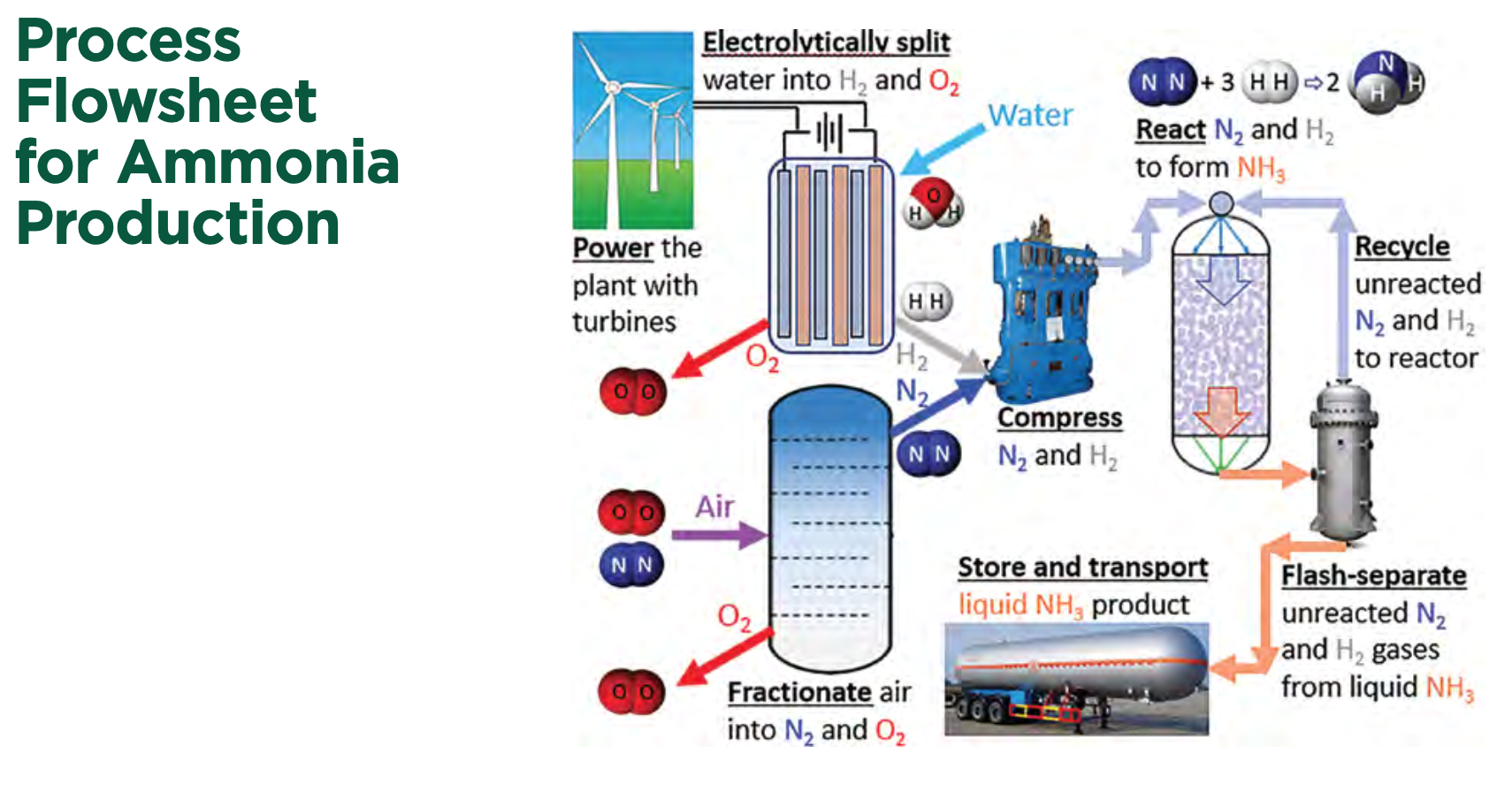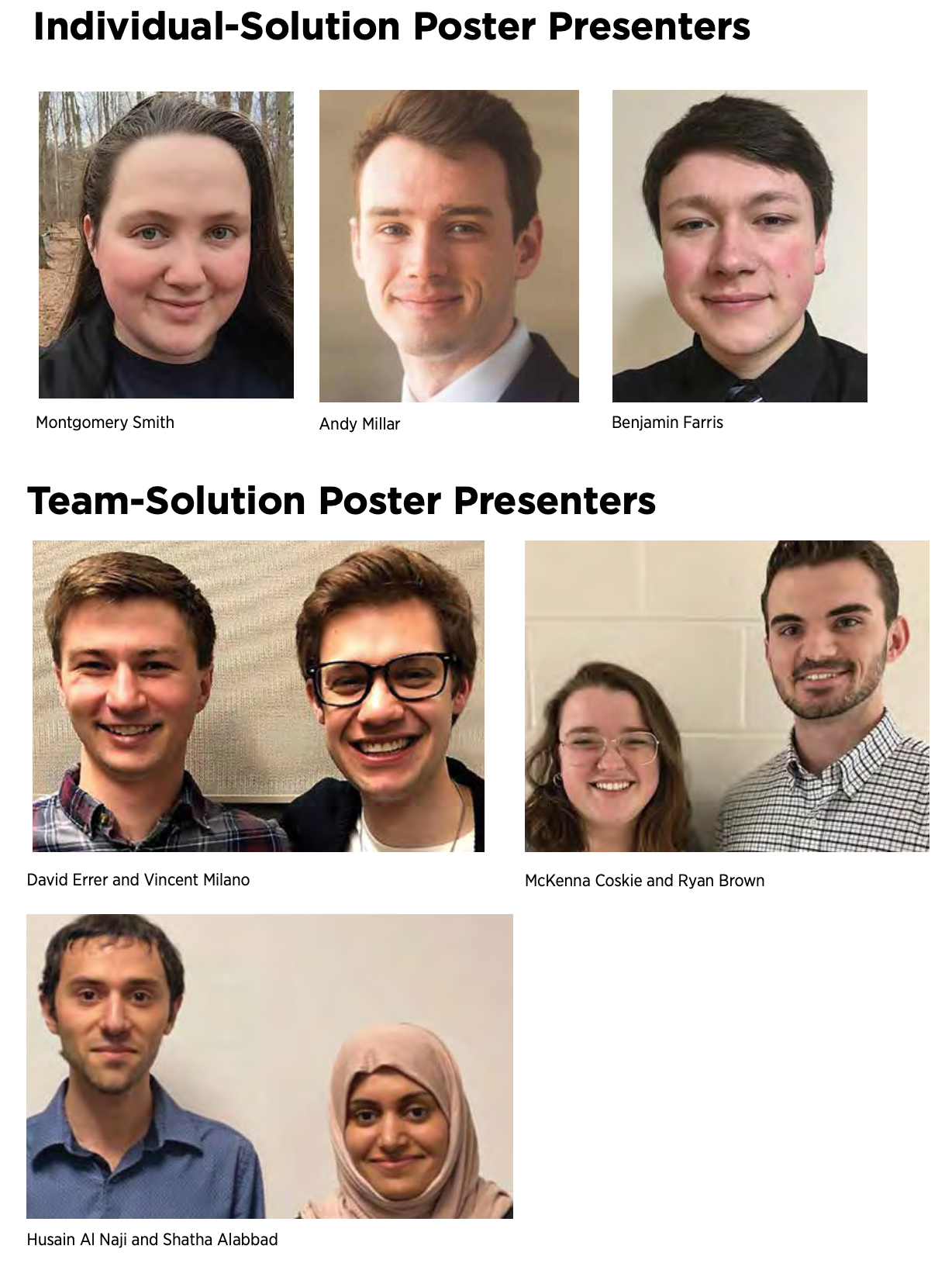The Chemical Engineering Capstone class participates in Spring Term Design Day. The following Design Problem was worked for Spring 2020
Manufacturing Facility for Ammonia
In 2020, the AIChE Student Design Competition problem was to design a next-generation process for ammonia (NH3) production that has a lower environmental impact than the traditionally used Haber-Bosch process. For decades, this process produced NH3 that has enabled dramatic increases in agricultural productivity worldwide. However, the Haber-Bosch process has also been responsible for 1–3% of the world’s total energy consumption, 5% of natural gas consumption, and a significant portion of greenhouse gas emissions. For these reasons, this year’s AIChE Design Competition problem asked engineers to design an innovative process that would have a lower environmental impact and use raw materials and an energy source that were renewable. The process flowsheet below shows a next-generation, environmentally friendly process whose raw materials are simply air and water. The air is fractionated to obtain streams of nitrogen (N2) and oxygen (O2) gas, and the water is split electrolytically to obtain streams of hydrogen (H2) and O2 gas. The N2 and H2 gases are compressed and pumped into a catalytic reactor, where they react to form NH3. Because this reaction does not go to completion, the reactor’s product stream is passed through a flash separator. There, liquefied NH3 is separated by gravity from unreacted N2 and H2 gases, which are recycled to the reactor. Oxygen gas produced as a byproduct of the air fractionation and water splitting can either be returned to the atmosphere Process Flowsheet for Ammonia Production or sold. To limit the environmental impact, the new plant should be sited near its point-of-use in the US Corn Belt and in an area where wind levels and local regulations are well suited for renewable electricity generation via wind turbines. Students submit their solutions as reports up to 225 pages long. The reports include details of the manufacturing plant’s equipment and operating conditions, personnel needs, capital investment, and a complete economic analysis that gives the expected discounted-cash-flow rate of return on the company’s investment.


